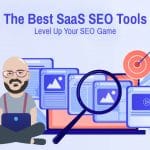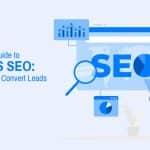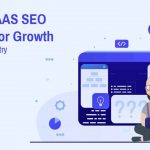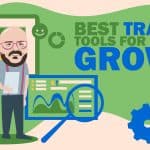Navigating the complexities of technical SEO can be a disheartening task for SaaS business owners. But mastering this craft is indispensable for website rankings and visibility.
If you want to be competitive in the SaaS market landscape, having an SEO strategy is the bare minimum. All technical elements of your website must be up and running to reach the results you desire in search engines.
This comprehensive guide will shed light on vital components of technical SEO for SaaS, offering pragmatic steps for optimization.
Intrigued? Let’s take you on a technical SEO journey!
Technical SEO for SaaS companies (Key Takeaways)
- Mastering technical SEO is crucial for SaaS companies as it improves their overall online presence.
- Optimal site structure and navigation enhance user experience and indexing.
- A clear and comprehensive URL structure helps search engine bots understand and crawl content efficiently.
- Responsive design for mobile devices contributes to a positive user experience and improved Google positions.
- Faster page speed leads to a boost in user engagement and better chances of higher rankings.
- Structured data with schema markup heightens search visibility by displaying rich snippets in SERPs (search engine results pages).
- Eliminating duplicate content prevents confusion among search platforms and improves visibility.
What Is SaaS Technical SEO?
SaaS technical SEO is aimed at “Software as a Service” companies and deals with SEO elements that are integral parts of a website performance, such as mobile friendliness, page load speed, indexing, and crawling. It’s like the foundations of a house as it ensures a website infrastructure is stable and rank-worthy.
If poorly handled, these technical factors can affect your site performance on SERPs in a negative way, leading to a decrease in traffic and conversions. Given the intense competition amongst SaaS organizations today, flawless implementation of technical SEO is substantial for standing out in Google SERPs.
SaaS Technical SEO Checklist for 2024
Technical SEO for SaaS companies involves optimizing key website elements to improve positioning and user experience, including:
- indexing and crawlability
- structured data
- mobile responsiveness
- page speed
- site structure
- URL optimization
- duplicated content
- website security
“SEO is more than just finding the perfect keywords. Page load speed, mobile optimization, crawlability, indexability, and structured data are all important technical variables in SEO performance.
However, marketing teams at SaaS startups frequently have other objectives, causing them to overlook critical technological concerns. In my view, it is critical for marketing to collaborate closely with IT and web design teams to ensure that they are doing everything possible to optimize for findability.” — Jeff Romero, Founder, Octiv Digital
Let’s take a deeper dive into these and other important tech SEO aspects.
Key Elements of a SaaS Website Technical SEO
Knowing how to handle technical SEO for a SaaS website can give you a significant advantage in online visibility and rankings. Here are the most important elements to focus on:
Site Structure and Navigation
Crafting a robust site structure is akin to laying out the blueprint for your SaaS organization’s online success. It represents the spine of your website, wherein each section is neatly categorized into sub-sections based on relevance and hierarchy. Think of them as building blocks that support each other.
A properly optimized site structure presents multiple benefits. It simplifies navigation for users, making information easily accessible in just a few clicks. More importantly, from an SEO perspective, bots can crawl pages with an organized structure more efficiently. That’s improving indexing and thereby potentially boosting SEO rankings.
To top it off, interlinking within a well-defined architecture ensures link equity is spread evenly throughout the site while bounce rates are reduced.
URL Structure
Making the most out of the URL structure of a SaaS site leads to improved search positions and a better user experience (UX). Clean and logical URL structures help Google understand your page content and give users navigation freedom.
Having relevant keywords in your URLs makes them more clickable and SEO-friendly. For example, a clear URL like “yourwebsite.com/blog/seo-tips-for-saas-websites” is more descriptive and user-friendly than “yourwebsite.com/article?id=83274235.”
Furthermore, it is recommended to use hyphens instead of underscores between words in the URL. This ensures better URL readability for visitors and search crawlers as well as easy access and understanding of the site content.
Mobile Responsive Design
With the majority of online users browsing the web via mobile devices, it’s essential for a SaaS site to offer a seamless experience with responsive design.
Not only does Google prioritize mobile-friendly sites, but they also provide a positive UX. A slow-loading or poorly designed mobile site version can increase bounce rates and lower conversions.
By adopting a responsive design, your website adjusts smoothly to different screens, thus providing users with optimal viewing on any device.
“The most critical technical SEO challenge that our SaaS business grappled with was, undoubtedly, mobile optimization, especially for our complex applications.
A specific instance comes to mind when one of our key applications performed flawlessly on desktop platforms, but its functionality drastically plummeted on mobile. Our metrics were sagging; user engagement and time-on-page dwindled.
So, we conducted a detailed, granular audit of our mobile user experience, flagging all elements that didn’t translate well on smaller screens. Then, we re-engineered our app, focusing on responsiveness and ease of use.
The results were immediate. Our bounce rates lessened, and user retention skyrocketed. Mobile optimization is not just about screen size; it’s about delivering a streamlined, user-friendly experience. And that’s what we accomplished.” — Joe Troyer, CEO and Growth Advisor, Digital Triggers
Page Speed and Website Performance
A slow site calls forth high bounce rates and unhappy visitors, ultimately affecting search rankings. Page speed is also one of Google’s core web vitals, meaning that a fast site boosts your chances of a higher ranking.
To maximize page speed, start by minimizing image size and minifying code. Embracing lazy loading, i.e., loading images as users scroll down the page rather than all at once, speeds up a page as well.
Another effective strategy is utilizing browser cache. It saves static files on the user’s device, so they don’t have to reload each time a visitor returns to your site.
Content Delivery Networks (CDNs) can also be involved in website speed acceleration. They allocate website resources across multiple servers worldwide and deliver data from the one closest to the user, reducing wait times.
Structured Data
Implementing structured data is a critical part of technical SEO if you want to build a successful SaaS business. Add the Schema.org data markup to give search engines more information about specific content. Thus, they will know how to classify it when indexing pages.
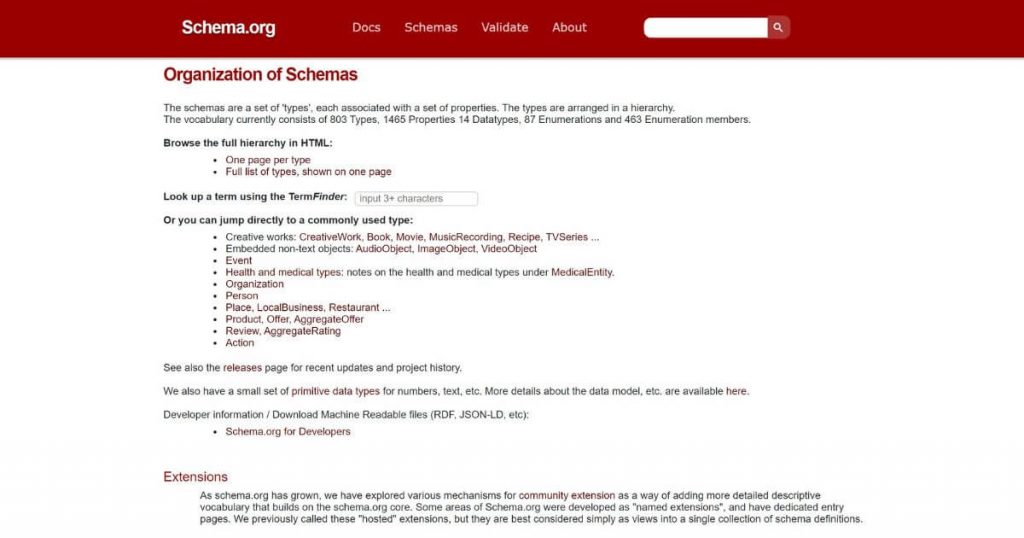
Schema markup allows you to add specific tags to your HTML code that define different elements on your site, such as logos, reviews, product or organization details, events, etc. This way, you provide search engines with data for rich snippets to display in search results. Whereas, users will see this information directly after they enter a search term.
Incorporating schema markup into your SaaS site enhances its SERPs visibility. Not only does this improve click-through rates (CTR) by giving potential customers more insight into what they’ll find on your site before clicking, but it’s also an SEO success factor implying relevancy to search engines.
Managing Duplicate Content in SaaS
Duplicated content on SaaS websites can be a major obstacle to rankings and traffic. When search engines encounter different versions of the same content, it confuses them and dilutes the ranking potential of your pages. To prevent this problem, it’s important for SaaS owners to proactively manage repeating content.
“SaaS businesses commonly face several technical SEO challenges due to the nature of their products and services. One major challenge is duplicate content, as SaaS companies often create multiple landing pages for different user segments or features, resulting in duplicate content issues that can negatively impact search rankings.” — Vaibhav Kakkar, CEO, Digital Web Solutions
One effective strategy is to use canonical tags. These tags specify the master copy of a page and indicate that other similar versions are duplicates or near-duplicates. By implementing them correctly, you notify search engines which version is the preferred one to index.
Additionally, managing duplicates also involves eliminating identical or very similar pages within your site. This could be due to multiple versions of a page being accessible through different URLs or even unintentional duplication across different sections of your site.
It’s important to identify these duplicates and either do a 301 redirect or consolidate their authority with canonical tags.
In addition, regular technical audits can help quickly identify instances of duplication. This allows you to promptly take corrective actions, such as rewriting, redirecting, or unifying similar pages with canonicals.
Indexing and Crawlability
Making sure that your SaaS site is crawlable by bots and properly indexed is key to maximizing its online visibility. Indexing refers to saving webpages in a search engine’s database, while crawlability refers to how easily they can access and navigate through your website.
“Some SaaS websites may unintentionally block search engine bots from crawling important pages or fail to optimize their XML sitemaps correctly. This can result in limited visibility and potential indexing issues.” — Krittin Kalra, Founder, Writecream
To improve indexing and crawlability, you need to follow these recommendations:
- Have a clear site structure with organized navigation.
- Use descriptive and keyword-rich URLs.
- Optimize your website for mobile devices as you prioritize improving page speed and performance.
- Implement structured data markup.
- Manage duplicate content issues effectively.
- Ensure proper canonicalization of URLs to avoid duplicate problems.
- Optimize rendering for better UX.
- Address status codes, such as 404 errors, promptly using appropriate redirects or custom error pages if necessary.
- Maintain website security protocols, such as SSL certificates.
Basically, these actions encompass the greater part of technical SEO in terms of indexing and are important to achieve more organic visibility and targeted traffic.
Rendering Optimization
Rendering optimization focuses on ensuring that crawlers can efficiently recognize and index the website content.
One important rendering optimization component is to minimize render-blocking resources, such as CSS and JavaScript files, as this reduces page load time.
Compressing images without losing quality can help improve a SaaS website performance. These tactics benefit SEO and enhance the overall usability and satisfaction of your website visitors.
Status Codes
Status codes consist of three-digit numbers indicating the response of a server to a client’s browser request. They must show the correct server response so that crawlers know how to perceive the page or site.
For example, the 200 OK code states a page is functioning correctly. The 404 Not Found specifies that the requested resource is missing on the server.
Other important codes are the 301 Moved Permanently and 302 Found (Temporary Redirect) codes, which indicate whether a resource has been permanently or temporarily relocated to a new URL. The 304 Not Modified code informs that the cached version of a page has not changed.
On the other hand, encountering errors like the 500 Internal Server Error or the 503 Service Unavailable can have negative consequences for Google rankings.
Website Security
An extra layer of website security protects not only your business but also users’ sensitive information. It’s important to take robust security measures with SSL certificates for HTTPS to establish trust with search engines and visitors alike.
In addition, regularly monitoring for vulnerabilities and promptly patching any identified technical issues helps safeguard against potential cyber threats. By prioritizing website security, you protect users and your brand reputation online.
Core Web Vitals
A proper understanding of core web vitals is fundamental for mastering technical SEO for your SaaS website. These metrics include loading speed, interactivity, and visual stability. They significantly impact rankings and UX.
Slow page loading not only hurts your SEO stats but also frustrates potential customers, who may abandon your site in favor of faster alternatives. Thanks to improved core web vitals scores, you provide a seamless browsing experience and better visibility.
Remember that monitoring and analyzing these metrics is essential to measure the success of your optimization efforts and make necessary adjustments to further enhance performance.
User Interface (UI) for better usability
By focusing on better usability and navigation, you improve customer satisfaction and engagement. A clutter-free layout, intuitive menus, and call-to-action buttons ease navigation for visitors.
Minimize user input by using defaults, autofill, and autocomplete. Users should be able to complete their tasks with less effort and distraction. What’s more, they should like the look and feel of the UI. Appropriate typographic hierarchy, colors, and fonts contribute to better readability and scanability of a text.
SaaS Technical SEO Audit Action Plan
To ensure that your business site is well-optimized and a magnet for traffic, conduct regular SaaS tech SEO audits.
Here are the steps to perform a thorough audit:
1. Ensure Key Pages Are Being Indexed
To maximize the visibility of your SaaS website, key pages have to be properly indexed. If they aren’t, they won’t rank and you will miss out on organic traffic.
There are several reasons why your pages might not be indexed, such as technical errors, duplicate or low-quality content, or manual penalties. To check which pages are indexed, you can use Google Search Console, Bing Webmaster Tools, or the “site:” operator in the search bar. These tools will show you how many pages of your site are indexed and whether any technical issues need fixing.
For better indexing, follow these SEO best practices:
- Provide a clear logical site structure for search engines and users to smoothly navigate.
- Write descriptive on-topic meta tags, page titles, and headings for each page, as well as add schema markup where applicable.
- Maximize page speed, add а website security certificate, and be mobile-friendly for better search performance and user satisfaction.
- Submit and update your sitemaps to tell search engines about new pages on your site.
- Add canonical tags to avoid duplications.
- Use robots.txt, noindex tags, or password protection for the pages you don’t want to be accessed, crawled, or indexed.
2. Robots.txt
You can find the robots.txt file after the slash at yourdomain.com/robots.txt. It allows you to control which pages of your site are accessible and indexable by search engines.
A well-structured robots.txt file helps get the most out of your crawl budget, keeps sensitive information protected, and improves overall optimization. Taking the time to review robots.txt is part of an effective technical SEO strategy.
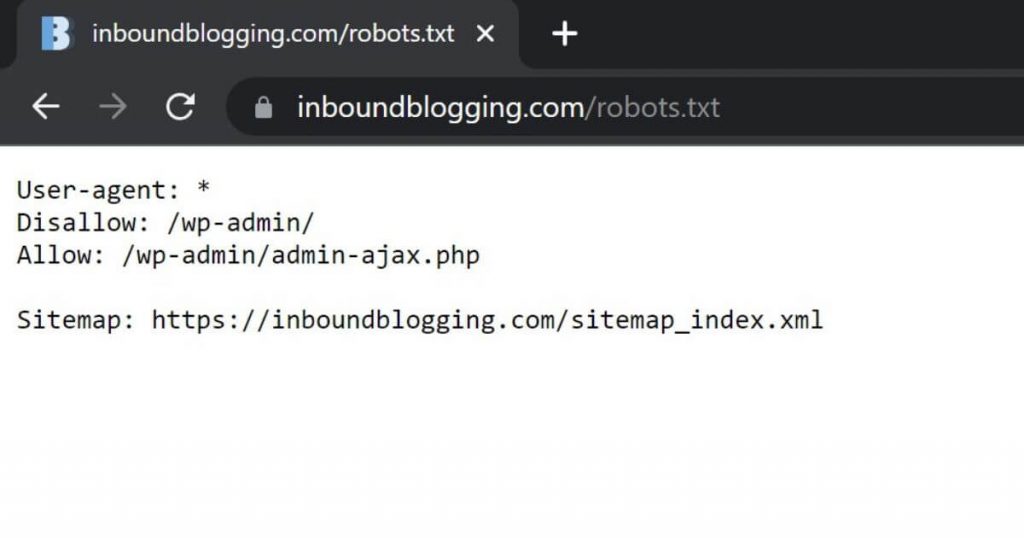
3. Unoptimized Title Tags
The title tag is a technical aspect of your site that plays a major role in telling users and search engines what a page is about. A missing or unrelated to the SaaS webpage’s topic title tag can affect online visibility.
When users come across your website in the SERPs, they rely heavily on the title to decide whether or not to click through. Additionally, without an accurate title tag, search engines may find it difficult to detect the relevance of your content, resulting in lower rankings and less organic traffic.
An on-point title tag can boost CTR and user engagement. Include primary keywords in the title tag to accurately reflect your page content.
4. Irrelevant Meta Description
A meta description is the brief text that appears under the title tag in SERPs. It provides users with a concise summary of what they can expect to find on your webpage.
Sometimes, search engines generate meta descriptions automatically or choose random text from your webpage, which can lead to an inaccurate representation of your content.
By writing unique and click-worthy meta descriptions for each page of your SaaS site, you improve CTR and traffic. A strong meta description must include relevant key terms and capture the user’s attention by highlighting key features or benefits of your product, service, or blog page.
5. Use of Heading Tags (H1, H2, etc.)
Using headings in the right places provides hierarchy and structure to the content of a SaaS website. Search platforms rely on them to grasp the topic relevance of each section. This can greatly improve Google positions.
By wisely spreading headings throughout the content, visitors navigate the page easier. Besides, search bots determine where to rank you based on these. So remember to optimize your H tags with targeted SaaS keywords that make the organization of your content clear.
6. 200 Response Codes
One fundamental aspect of technical SEO for SaaS is understanding response codes, particularly the 200 OK one. It indicates a successful request, meaning that the page has been found and loaded correctly.
Ensuring that your website consistently returns 200 response codes is crucial for search crawlers to index pages properly.
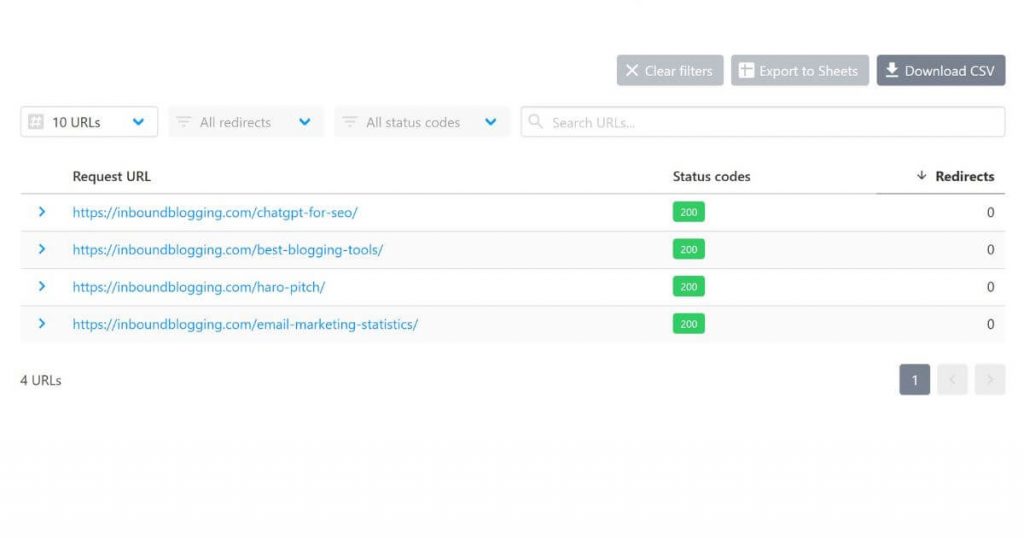
Moreover, maintaining proper response codes optimizes the crawl budget and prevents any issues that may arise from broken links or redirects. By staying vigilant about monitoring and addressing any potential issues with response codes, you clear the path for search engines to access and index your site efficiently.
7. Eliminate 404s
Eliminating 404 errors is a critical step in optimizing a SaaS site. Encountering a “404 Not Found” page is a frustrating experience for users, which leads to them leaving the site. That’s exactly the opposite of what you want to happen.
Search crawlers consider 404 errors as negative signals, which can affect your SEO rankings. By fixing outdated URLs or broken links, you make sure every page serves its purpose.
Conducting regular SEO audits is key to maintaining an error-free website.
8. Employ the Right URL Structure
By employing clean and logical URLs, search engines can easily figure out your website hierarchy and users can freely navigate through it.
A good URL is succinct, definitive, and keyword-rich. It enhances the webpage’s relevance to a query and contributes to a better UX. Avoid including unnecessary parameters or numbers in URLs as they don’t add SEO value.
9. Set Up SSL Certificates Correctly
Setting up an SSL certificate correctly confirms that website visitors’ data is secure. It also gives you priority in SERPs, as search engines prefer HTTPS over HTTP. So, having a valid SSL certificate can give you a competitive advantage.
An accurately installed SSL certificate prevents SaaS sites from potential security vulnerabilities and signals trustworthiness to visitors. Thus, you not only protect sensitive information but also inform search engines your website can be trusted.
10. User-friendly Navigation and Anchor Text
User-friendly navigation menus with clear anchor texts on your SaaS website allow visitors to quickly find the information they need.
Additionally, descriptive anchor text in internal links assists search engines in determining the linked page context, which improves site visibility.
By optimizing your navigation and anchor text, you can enhance the user experience on your SaaS website and earn higher search positions.
11. Page Load Performance
Fast-loading pages are proven to provide a better user experience and higher ranks in search engines.
Even a second or two of delay in load times may result in higher bounce rates and, thus, lower conversions. That’s why loading speed optimization must be a top priority.
You can improve your page load time by reducing image size, minifying CSS and JavaScript, and using content delivery networks (CDNs).
What’s more, browser caching and lower server response times are essential for creating lightning-fast websites.
12. Create and Optimize a Sitemap
A well-structured sitemap must include all the important webpages you want search crawlers to discover. Sitemaps show the website content hierarchy with all the resources a search bot must crawl and index.
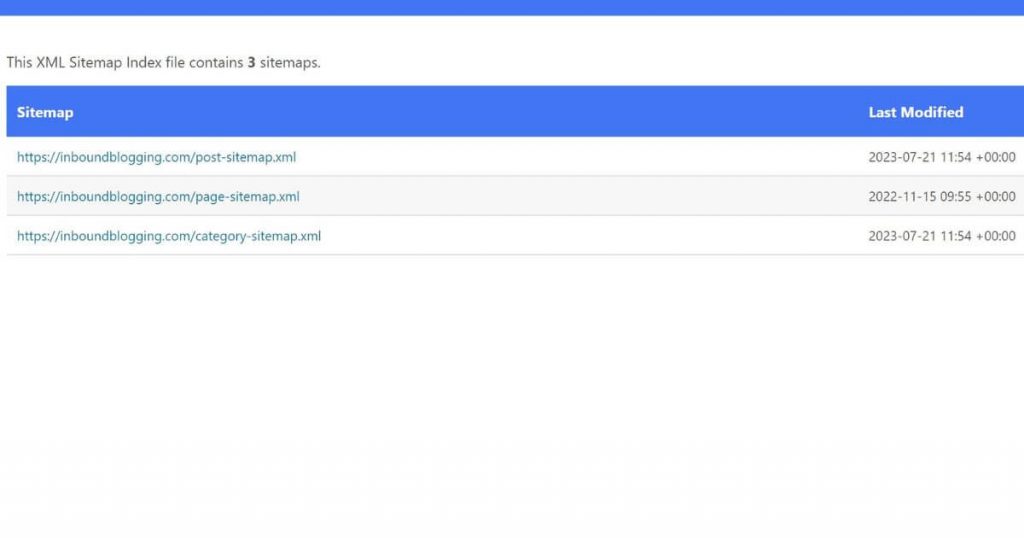
Remember that optimizing alt text for images included in your sitemap is essential for accessibility purposes as well as improving positions in Google image search. Alt text includes information about the image (e.g. describing what’s on it) when it doesn’t load correctly. This helps search engines determine its context.
13. Mobile-friendliness
As users are transitioning to mobile device usage, search engines prioritize mobile-friendly websites. Google has even introduced Mobile-First Indexing, so it primarily uses mobile website versions to rank pages in SERPs.
A SaaS website with a responsive mobile design has a higher chance of increasing its conversion, CTR, and engagement metrics.
“Building a website that’s responsive to a variety of devices and screen sizes is a critical aspect of technical SEO. Responsive design is a must-have feature in today’s digital landscape, as consumers use their phones and tablets to interact with businesses. A responsive website makes it easy for customers to browse your products or services and contact you with a tap or click.” — Matthew Ramirez, Founder, Rephrasely
14. No Orphaned Pages
In SEO, the pages that don’t have a link from other webpages within your site are called orphaned. This makes them difficult for crawlers to discover and index. None of them should be left unlinked when optimizing a SaaS website for technical SEO.
Important pages must be properly interlinked within the website architecture so that they are accessible for crawling. Googlebot must have a clear path to discover every valuable piece of content you have.
Avoiding orphaned pages maximizes the potential of your SaaS website to attract users through organic search.
15. Eliminate Duplicate Content
When Googlebot discovers multiple pages with similar or the same content, it may struggle to determine which page to rank. That’s why it gives all of them a lower position. Duplicate content dilutes the overall webpage relevance and value in the eyes of search bots.
To confirm you won’t face any issues related to duplication, you must implement strategies to eliminate it. The first option is through canonical tags, which specify the master copy of a page. They also inform Google and its search engine alternatives that any other page versions are duplicates.
Another effective approach is to regularly conduct SEO audits using specialized tools, such as Screaming Frog or Copyscape. By proactively identifying and resolving these problems, your website gets a higher chance of ranking well and driving more organic traffic.
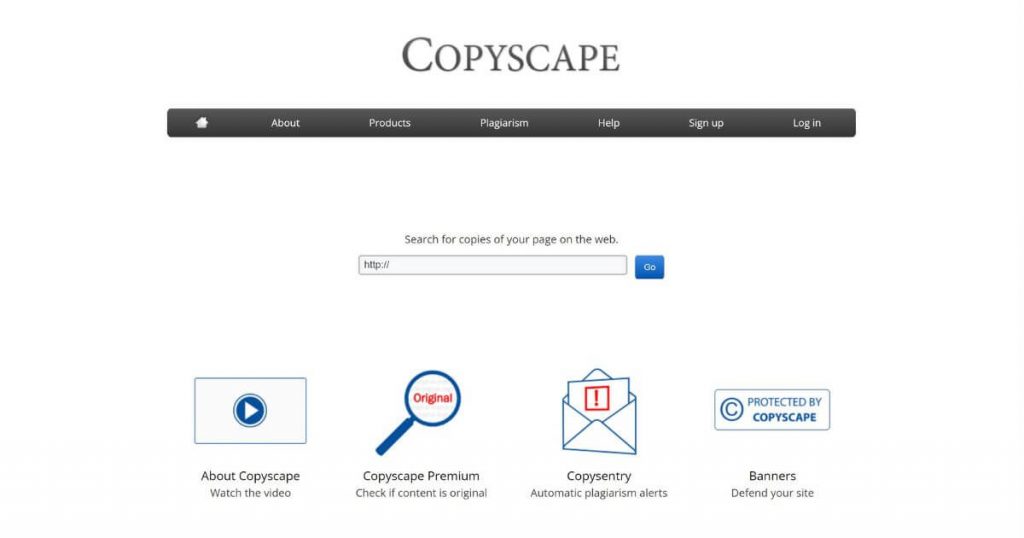
16. Check JavaScript Rendering
Search crawlers don’t fully understand JavaScript. This means that if important content or elements on your site are rendered in JavaScript, search bots may have trouble reading and indexing them.
To ensure that your JavaScript-rendered content is read by search engines, check how it renders with Google’s Mobile-Friendly Test or Lighthouse. These tools help identify rendering issues and provide recommendations for improvement. By ensuring that your JavaScript content is indexable, you’ll improve the visibility of your SaaS website in SERPs, driving more traffic and customers to your business.

Free Technical SEO Optimization Tools
By consistently tracking technical metrics with SaaS SEO tools and taking actions based on the data collected, SaaS businesses can improve website metrics and outrun competitors in the online marketing landscape.
Let’s look at three free options:
Google Search Console (GSC)
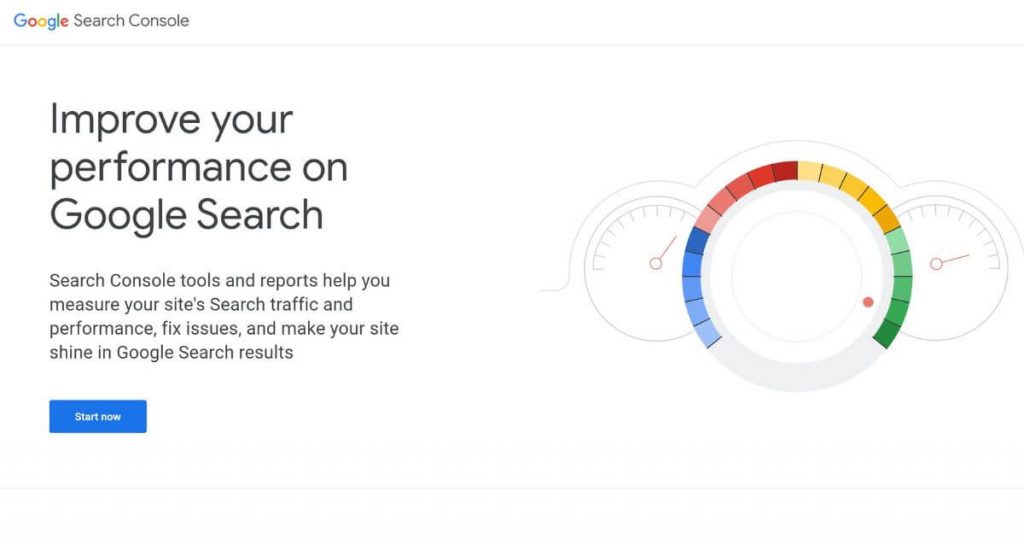
One invaluable tool for SaaS websites looking to improve technical SEO is Google Search Console. It’s a free tool offering a wide range of site optimization features.
With Google Search Console, you can monitor key metrics, such as organic traffic, impressions, CTR, etc. It also shows crawl errors, indexing issues, and mobile-friendliness. Additionally, the tool allows you to submit sitemaps.
Key Features
- Indexing and Crawling: GSC allows monitoring web indexing and crawling. It provides information on the number of indexed pages, crawl errors, sitemap status, and robots.txt issues.
- Mobile-Friendly Test: It includes a mobile-friendly test feature that provides information about website responsiveness and user-friendliness on different mobile devices.
- Page Speed Insights: It shows performance data, including suggestions for improving core web vitals and page load time.
- Structured Data Markup: It helps search engines understand your content and display rich snippets in search results. In GSC, you can also validate and test structured data markup on your SaaS website.
- Website Migration Support: If you’re planning a website migration or redesign, GSC provides technical guidance to ensure a smooth transition without losing SEO equity, rankings, or traffic.
- Penalty Recovery Services: In case your SaaS website gets hit by a penalty from Google, GSC offers penalty recovery options. It helps identify the penalty cause and guides you through the recovery process to regain lost traffic and rankings.
- Metadata Analysis: Google Search Console analyzes metadata, measures the effectiveness of your technical SEO efforts, and suggests improvements.
- International SEO: For SaaS companies targeting international markets, GSC offers multi-language optimization. This includes hreflang tags and subfolders for different language website versions.
Screaming Frog
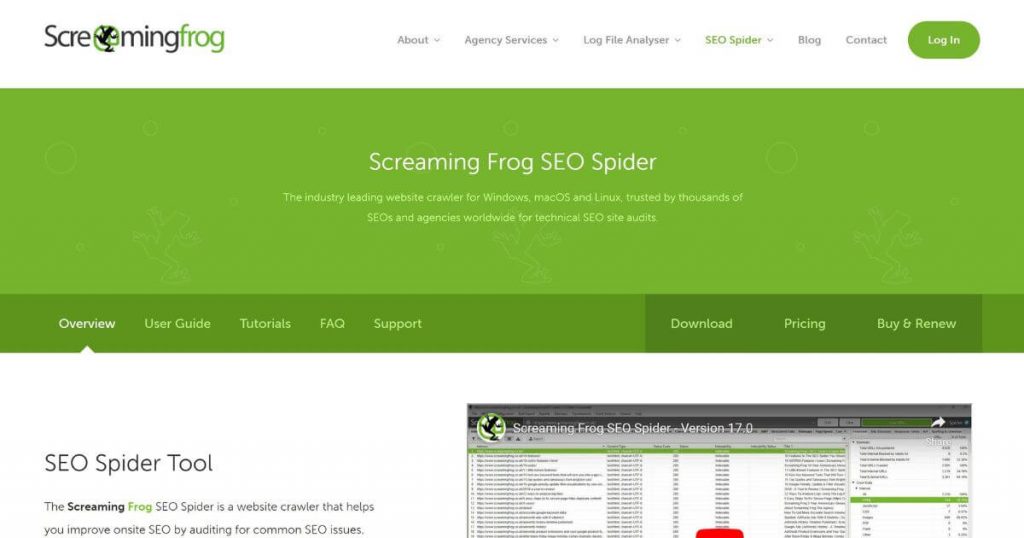
Screaming Frog has features like duplicate content identification, canonical tag implementation, and response code analysis. It helps you identify issues that can cause difficulties in gaining higher positions.
In addition, you can quickly check if the correct HTML tags (the H tag headings) are being used on each page and make sure your content is relevant.
Plus, with its ability to analyze response codes and broken links, Screaming Frog SEO Spider allows you to control the crawl budget and indexability of your SaaS website.
Key Features
- Technical SEO Audit: The tool allows you to conduct an audit of your SaaS website and reveal technical SEO problems that may be affecting its performance.
- Duplicate Content Detection: Identify the same/similar pages on your site and resolve the issues, ensuring better rankings.
- HTML Tag Analysis: Analyze the usage of HTML tags like H1, H2, and H3 on your pages to ensure proper hierarchy and optimization.
- Canonical Tag Validation: Apply the right canonical tags to prevent duplication and improve visibility.
- Response Code Analysis: Get insights into response codes like 3xx redirects and 404 errors to troubleshoot crawling and indexing issues effectively.
- Pagination Optimization: Pay attention to page elements (meta tags, page titles, and URLs) for each page in pagination to maximize visibility.
- Robots.txt Testing: Verify that your robots.txt file is well-configured to control crawlers’ access to your SaaS website.
- XML Sitemap Generation: Generate an XML sitemap to help search bots find and index all pages accurately.
- Alt Text Optimization: Ensure that alt text is properly optimized for images on your site, improving accessibility and potentially boosting rankings in image searches.
Google Pagespeed Insights
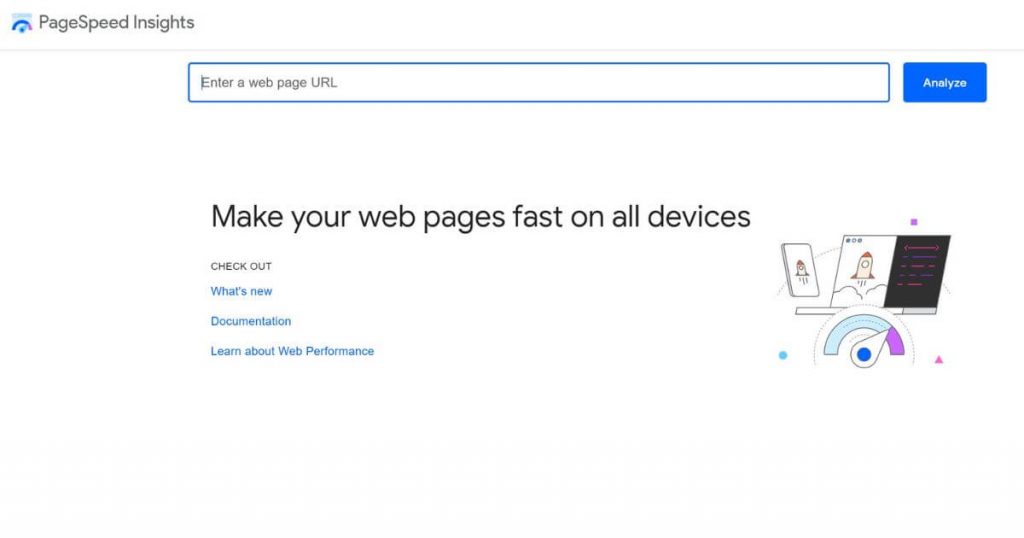
Google Pagespeed Insights serves as a page-loading speed inspector. It analyzes server response time, image size, render-blocking resources, etc. As a result of this analysis, you get an idea of what to improve in terms of load time. This helps retain visitors on your site longer.
As part of a comprehensive technical SaaS SEO strategy, Google Pagespeed Insights is a must-have asset in ensuring that your SaaS website provides smooth browsing for visitors while boosting its visibility in the SERPs.
Key Features
- Analysis of Mobile and Desktop Performance: Pagespeed Insights evaluates loading speed on mobile and desktop devices, giving diagnostics.
- Page Speed Scoring: The tool assigns a score from 0 to 100 based on loading speed. A higher score indicates a good result, while a lower score suggests areas for improvement.
- Performance Optimization: Pagespeed Insights gives recommendations about loading speed. They include server response time, render-blocking resources, or image sizes.
- User Experience Analysis: The tool assesses how quickly your site becomes interactive and measures other critical user experience metrics, such as Time to First Byte (TTFB) and First Contentful Paint (FCP).
- Opportunities for Improvement: Pagespeed Insights highlights issues that affect site performance and provides actionable insights on how to address them effectively.
- Lighthouse Scoring Integration: As part of Google Pagespeed Insights, Lighthouse scoring offers additional metrics related to web page accessibility and best SEO practices.
- Real-time Data: You can use Pagespeed Insights to monitor the real-time performance data of your SaaS website over time, allowing you to track improvements and adjust optimizations accordingly.
- Integration With Other Tools: Pagespeed Insights integrates seamlessly with other essential tools like Google Analytics and Google Search Console for a holistic view of a website performance.
Technical SEO Challenges and Solutions for SaaS Businesses
The hyper-dynamic world of Software as a Service (SaaS) exposes businesses to unique technical SEO challenges. This segment unpacks them all and provides practical solutions:
Challenge 1: Scalability and Technical SEO
Rapid growth can strain the infrastructure of any burgeoning SaaS operation. Complexities increase exponentially when accommodating vast amounts of pages and data, which may lead to difficulties with SEO.
Solution: Implement dynamic sitemap generators that keep your site structure progressive. Leverage automation scripts/tools for efficient meta tag management. Ensure uniformity in URLs, page structures, and content across the website using URL standardization techniques. Adopting cloud-based solutions could aid scalability.
Challenge 2: Dynamically Generated Content
Dynamic content generation is common among SaaS platforms. However, this presents two-pronged implications. On one hand, it facilitates customized user experience, but the flip side poses problems with SEO aspects such as page crawlability and indexing.
Solution: Utilize JavaScript frameworks like ReactJS or AngularJS, which cater to server-side rendering, thus enhancing crawlability. Another method is prerendering—offering search engine bots static webpage versions to improve indexation rates while simultaneously bolstering visibility.
Challenge 3: Internationalization & Multilingual SEO for SaaS Platforms
A SaaS website with a global audience requires coherent international SEO strategies as additional complexities may arise due to potential duplicated content, inconsistencies in geo-targeting languages, etc.
Solution: Harness hreflang tags to inform Google about your webpage’s language, geographical targeting, and which regional version to display in searches. Managing duplicate content across multilingual site versions is also possible with canonical tags.
Overcome Saas SEO Challenges With InBound Blogging
InBound Blogging is an SEO agency experienced in working with SaaS companies. We cover all aspects of technical SEO for SaaS with superb patience and resilience.
Leave the hard work to us, and get an error-free website ready for crawling, indexing, and ranking!
Here’s what we’re capable of:
✅ Fixing robots.txt and creating dynamic sitemaps.
✅ Updating URL and site structure.
✅ Implementing canonical tags and redirects.
✅ Setting up SSL and HTTPS.
✅ Optimize website and page speed.
✅ Add accurate meta titles and descriptions.
✅ Ensure correct server responses (200 OK, 404, etc.).
✅ Eliminate duplication issues.
✅ Organize internal linking and anchors.
InBound Blogging conquers technical SEO hurdles with all the necessary attention.
Contact us now to unlock the full potential of your SaaS website.
Latest Trends and Updates in Technical SEO for SaaS
Staying up to date with the latest SaaS trends and updates is crucial for mastering technical SEO for SaaS. Here, we’re going to discuss some of the most recent developments shaping this aspect of SEO.
Trend 1: Core Web Vitals
Google’s ranking signals, Core Web Vitals, have become an essential part of technical SEO. They’re all about improving user experience—measuring metrics like load time, interactivity, and visual stability.
Google announced that prioritizing these metrics can boost your overall rankings. So, make sure to optimize your site accordingly by eliminating render-blocking resources, minimizing CSS, and setting height/width attributes on images/videos.
Trend 2: Mobile-First Indexing
Mobile-first indexing means Google predominantly uses the mobile version of a website for indexing and ranking. This move signifies the importance of having a top-notch mobile site in addition to a desktop one.
Google officially switched over to mobile-first indexing for all websites. Hence, it’s essential that your site is fully optimized for mobile devices. So, ensure quick load times, enable Accelerated Mobile Pages (AMP), and avoid using Flash.
Trend 3: Structured Data & Schema Markup
Google continues highlighting the importance of structured data. With schema markup, you can provide more context about your page content and increase search visibility (with Rich Snippets, Knowledge Graphs, etc.).
Recently introduced schema types include the SoftwareApplication schema, which is specifically beneficial for SaaS businesses. It provides valuable information about their software application, such as name, operating system, application category, etc., amplifying their online presence.
Remember these are only some of the highlights. Technical SEO is constantly evolving, so it’s paramount to stay up to date with changes to ensure smooth sailing in the digital space.
Conclusion
Mastering technical SEO for SaaS websites is pivotal for maximizing visibility and organic traffic. Optimal site and URL structure, page speed, and mobile experience are some of the SEO elements SaaS companies should pay close attention to.
With the right tools and continuous tracking of technical SEO metrics, SaaS organizations can outrun the competition and enhance their online presence. Start implementing these strategies today to enhance your website performance and achieve higher results in SERPs.
FAQ
What is technical SEO and why is it important for SaaS websites?
Technical SEO is the actions you take to optimize a website infrastructure and coding to improve its SEO performance. It is a major component for SaaS websites as it helps search engines index their pages, which leads to higher organic positions.
How can I optimize my SaaS website for technical SEO?
To optimize your SaaS website for technical SEO, you should focus on site speed, mobile optimization, crawlability, structured data markup, URL structure, XML sitemaps, meta tags, and internal linking.
Are there any specific considerations for SaaS websites when it comes to technical SEO?
Yes. There are some unique considerations for SaaS websites in terms of technical SEO. These include implementing user-friendly URLs that reflect the software features or functionalities offered by your product, optimizing landing pages for different customer segments or industries, using dynamic content personalization techniques, ensuring secure connections (HTTPS), implementing schema markup relevant to the software industry (e.g., product schema), and regularly monitoring server uptime to ensure uninterrupted access to your digital product.
How can improving technical SEO benefit my SaaS business?
Improving technical SEO can have several benefits for your SaaS business. It can increase your website organic traffic by improving its visibility. This means more potential customers discover your software solution organically, without paid advertising.
Additionally, better site performance resulting from technical optimizations can enhance user experience. Thus, your site can reach higher conversion rates and customer satisfaction.
